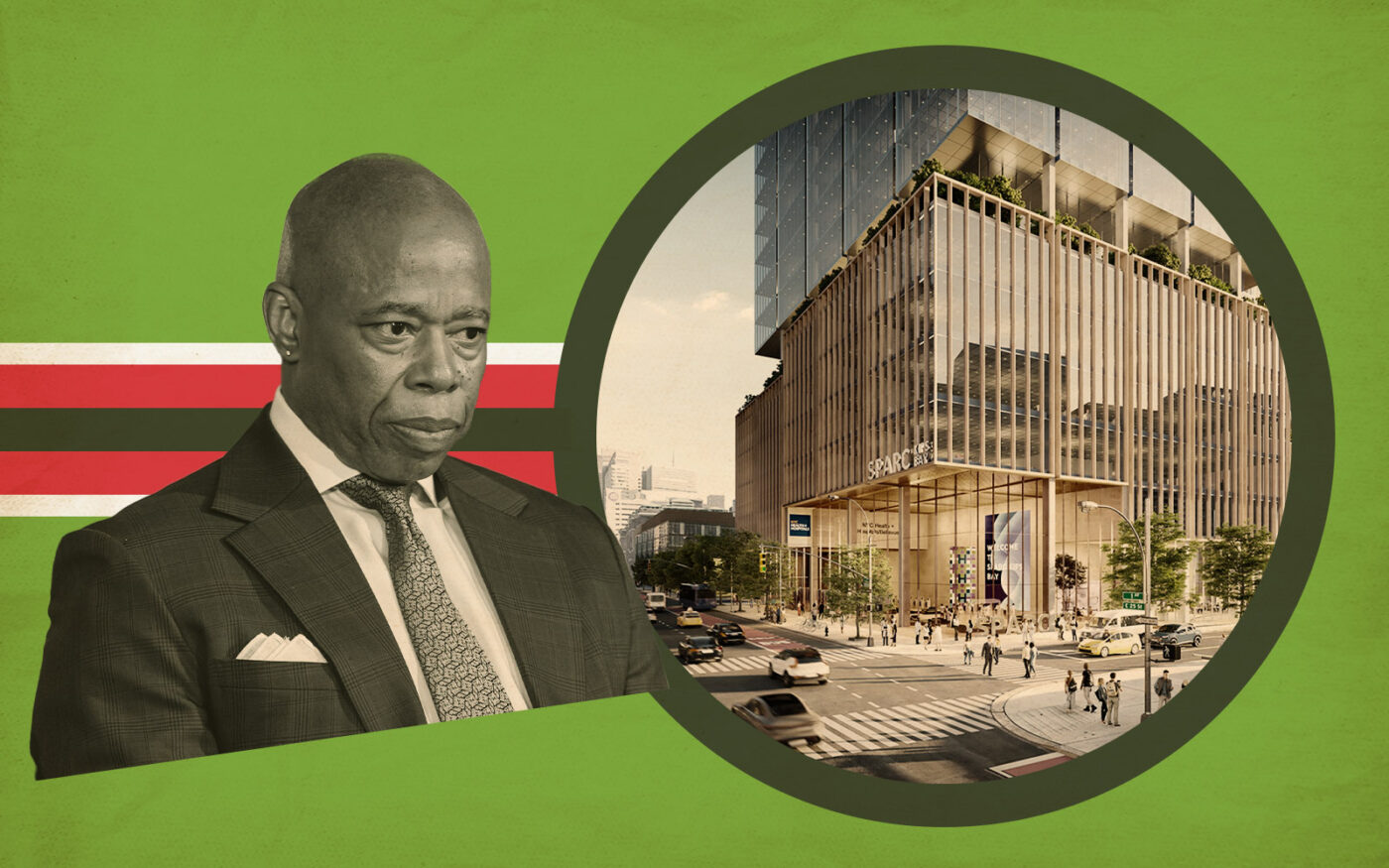The Adams administration is on the lookout for opportunities to build housing on city-owned land — but not on a Kips Bay parcel with East River views.
The Economic Development Corporation is seeking approval for a life science campus between First Avenue and the FDR Drive and East 25th and East 26th streets. The eastern portion of the site would include a new educational building for Hunter College and the CUNY Graduate School of Public Health & Health Policy.
EDC will seek a private developer to take over the western portion of the site to build life science facilities and office space.
The idea is to create a pipeline from these universities and local public schools to the life science and health industries that take up residence in the Science Park and Research Campus, or SPARC.
During a recent Community Board 6 hearing on the project, Ben Wetzler, who is running for City Council member Keith Powers’ seat, asked if the plan for the site could be adjusted to include housing.
It was not a surprising question, given the administration’s focus on the city’s housing crisis. Last month, Mayor Eric Adams signed an executive order directing city agencies to analyze city-owned sites for opportunities to build affordable housing.
The answer was perhaps more surprising: No, the project could not include housing.
“Space is limited, and we have to make choices,” EDC’s Adam Grossman Meagher told Wetzler. “We also recognize that providing housing and growing housing supply is critical, but also having jobs that New Yorkers of all backgrounds can access, that can pay for housing, is also an important part of delivering affordable housing and having an affordable city.”
The EDC is seeking zoning changes to pave the way for the life science campus. Normally, such a rezoning would trigger MIH affordability requirements, resulting in a “substantial increase” in allowable residential density.
But the Adams administration maintains that after “intensive community review and engagement,” it determined that affordable housing is not viable at the site, and is seeking a special permit for the space to be used as lab space instead.
The Adams administration maintains that after “intensive community review and engagement,” it determined that affordable housing is not viable at the site.
“If there’s land within the city’s control that has even the remotest potential to develop affordable housing, our administration will take action to assess its viability,” a City Hall spokesperson said. “To solve a generational affordable housing crisis, we must bring new innovative ideas to the table and activate all city agencies to help deliver for New Yorkers.”
The SPARC plan calls for a change from R8 zoning to C6-4, which allows for larger residential and commercial space. However, EDC is also seeking a special permit to allow laboratory use on the site and specifies that residential space is not part of the plan.
When just taking allowable density and dwelling unit factor into account, roughly 3,600 residential units could be built. If just the life science space were dedicated to housing, the unit count could be 2,274. Trading the public and school space for housing would allow 1,378 units.
The MIH overlay is tied to the land, not the project, so if residential ever takes the place of life science, a percentage of the units would need to be set aside as affordable.
The city hopes that the campus will create 3,100 permanent jobs in the life science sector and have a $42 billion economic impact over the next 30 years.
Still, demand for life science space has softened. A CBRE report from February noted that the life sciences market faced “significant headwinds” in New York and nationally over the previous two years, in part because of high interest rates. The brokerage’s latest report on the market found that no lab leases were signed during the first quarter of this year.
More than 59 million square feet of life science space has been built in the U.S. since the first quarter of 2020, with another 19.1 million on the way, the Wall Street Journal reported, citing JLL data. Some cities are feeling the sting of wavering demand and are trying to lease out would-be labs as office space instead, according to the Journal.
Other labs in the city have struggled to find tenants, Bisnow reported. At a site near SPARC, Alexandria Real Estate Equities alleges that the city delayed the third phase of its campus, causing the real estate investment trust to miss out on a life-science bull market.
Alexandria sued the city last month, claiming that the EDC repeatedly changed the design for a planned sea wall on the site and went back on its promise that the Federal Emergency Management Agency would pay for it.
City Council District 2 in Manhattan, which includes Kips Bay, ranked 37th out of 51 districts in housing units created between 2014 and 2023, according to a report by the New York Housing Conference. During that decade, only 442 units were built.
Read more



